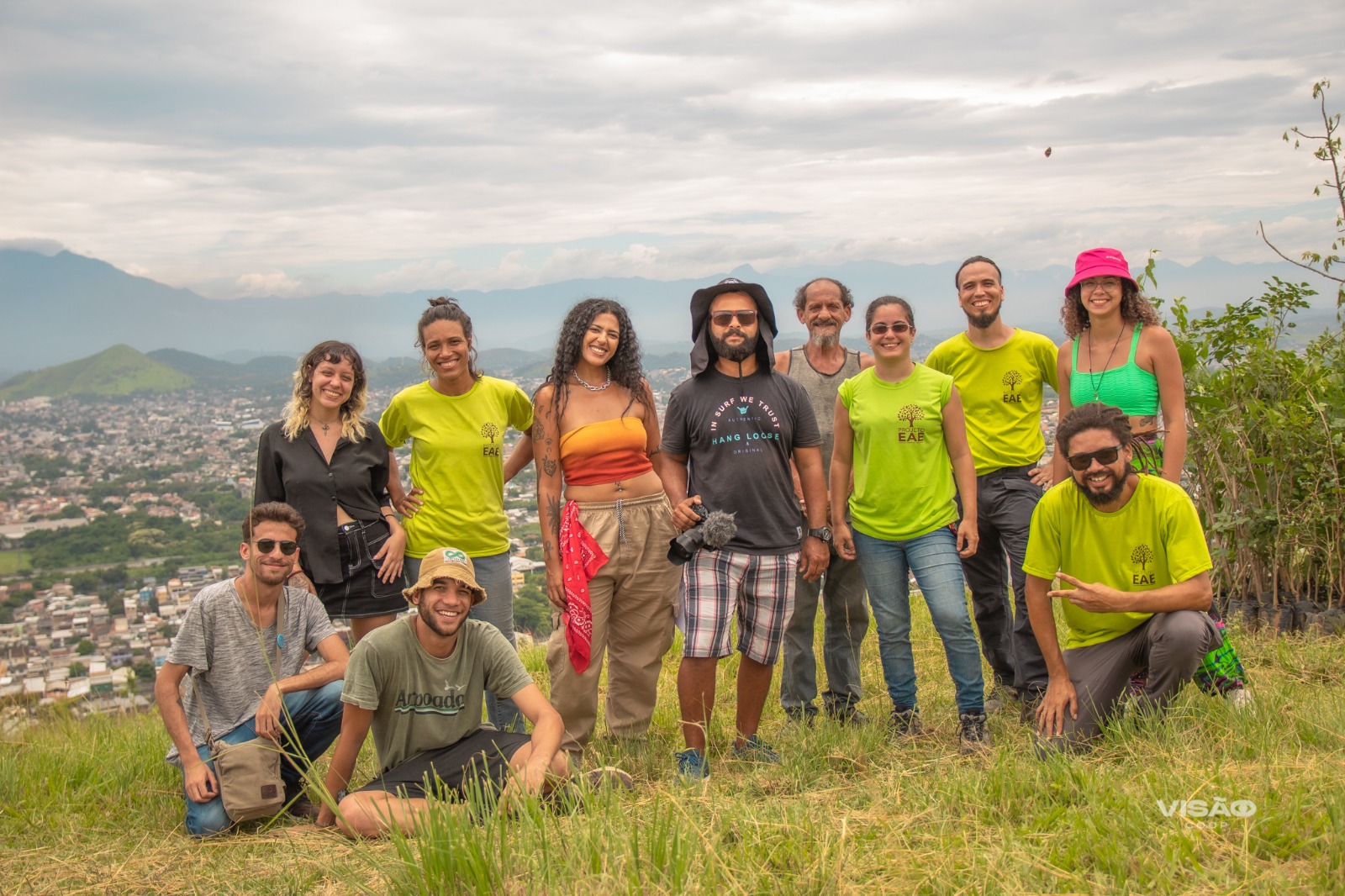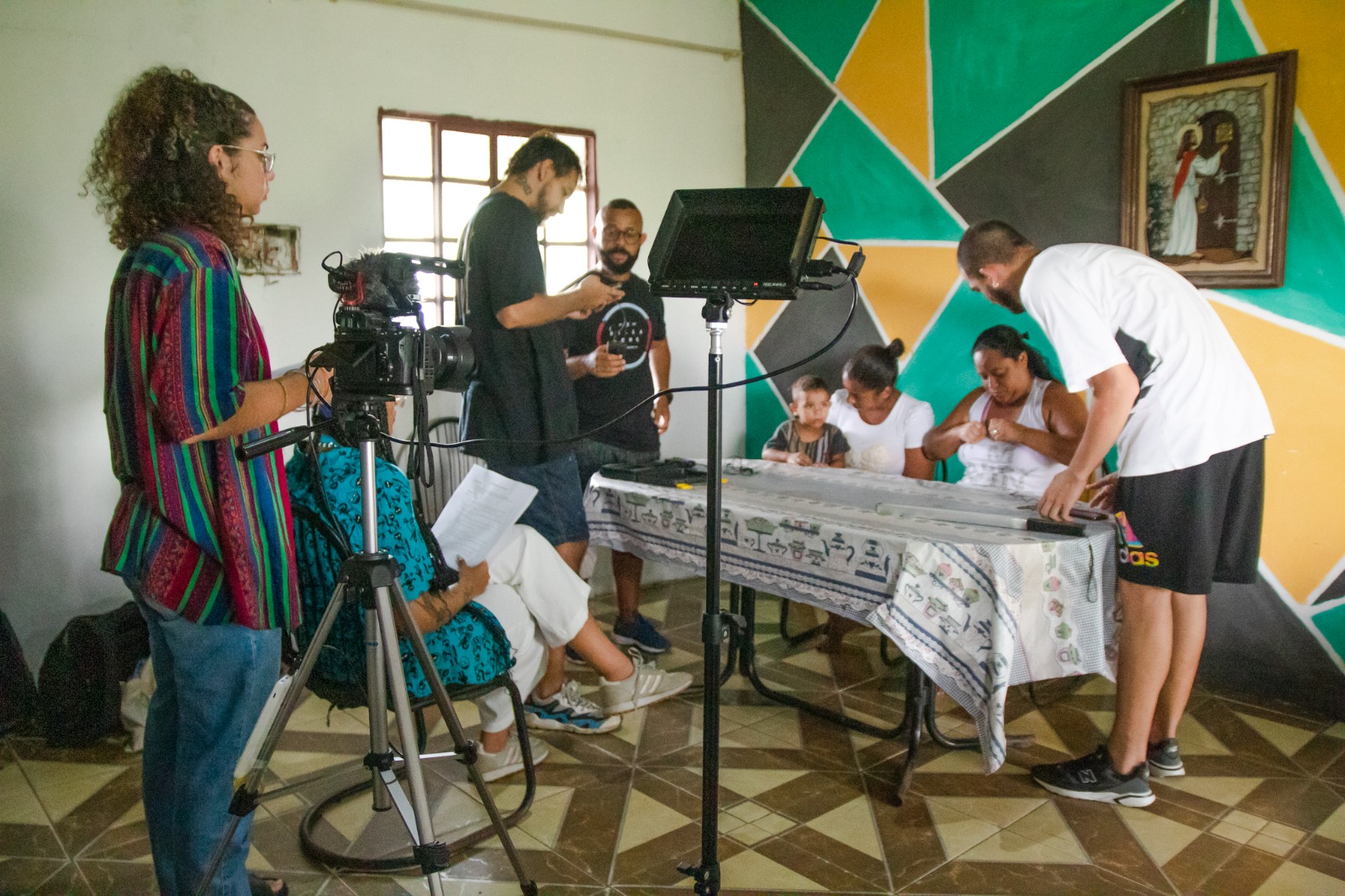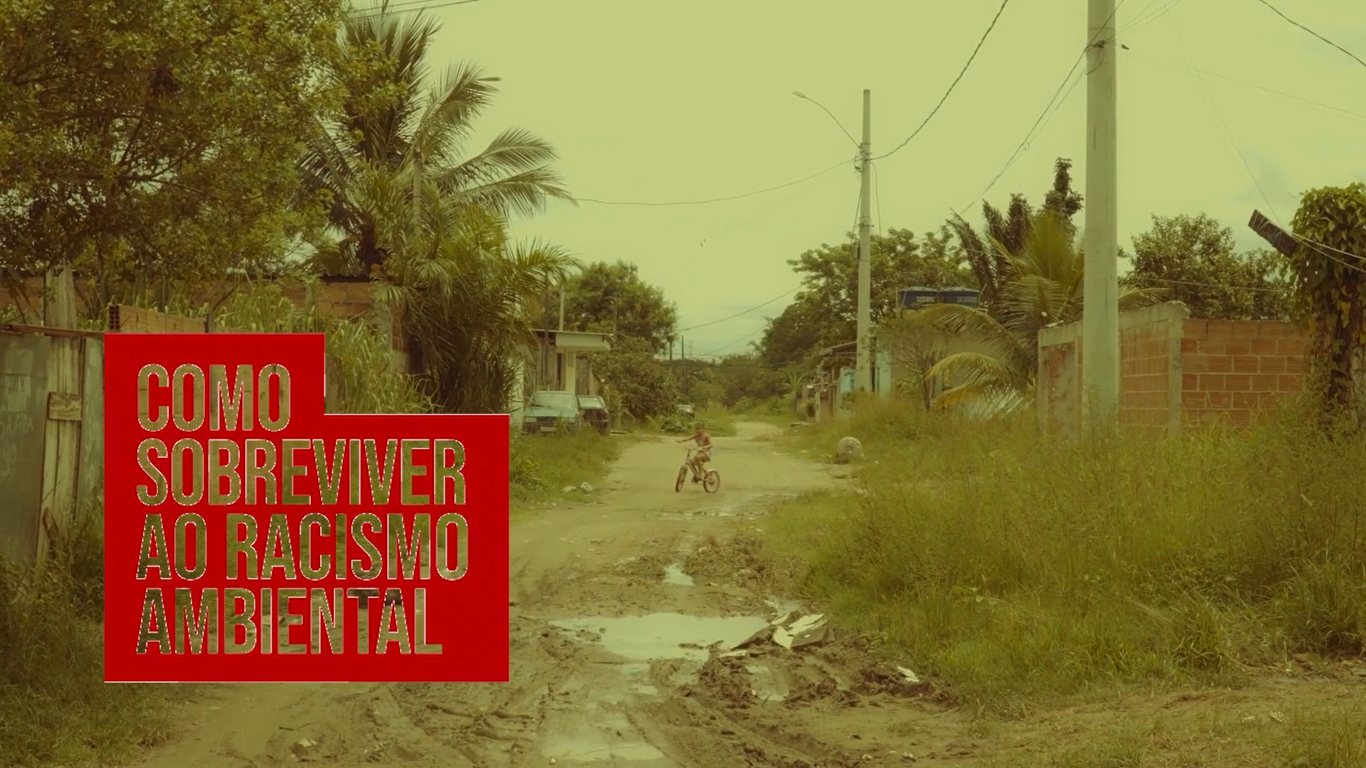Clique aqui para Português
This article offers a behind-the-scenes look at the documentary How to Survive Environmental Racism. Divided into four chapters, the documentary-in-progress serves as a tool against the invisibility of Greater Rio de Janeiro’s Baixada Fluminense region’s climate crisis. Supported by Fundo Casa 2022 and crowdfunding efforts, and produced by Visão Coop, the film was entirely shot in the Baixada and brings to light the reality of everyday environmental struggles, which have produced serious consequences for the local population over decades. The work’s completion, however, is contingent on additional funding, further reflecting the scarcity experienced by organizers in the region.
To measure the devastating effects of climate emergencies, such as heavy rains, in Brazil, you just need to observe the immediate impacts in urban peripheries. In February 2020, in the city of Queimados, in Greater Rio’s Baixada Fluminense region, downpours left entire neighborhoods under water, leading to anxiety, fear, and significant material losses for many who had spent years struggling to achieve basic comforts. These stories remain vivid for journalist Fabrícia Sterce, a resident of the region.
During the 2020 Queimados floods, Sterce, born and raised in the Pedreira neighborhood, organized an emergency crisis task force with a group of friends, which produced the first diagnosis of climate vulnerability of their city. Together, they interviewed and delivered copies of the report to every candidate for mayor, just in time for the municipal election season.
Their research not only highlighted local infrastructure challenges, but also served to hold future public officials accountable for their commitments to bring change. As such, the group decided to continue their efforts to permanently monitor the city’s risks.
In response to public authorities’ neglect in the face of increasing environmental precarity, the group resolved to annually collect information documenting the state of climate vulnerability. The initiative has since become Visão Coop, a civic laboratory organized through cooperation networks focusing on social, digital, and green technologies in the Baixada. The accumulation of data, footage, and other efforts made in conjunction with social media brought together enough material to direct a documentary narrating the consequences of climate change in the region.
“After the 2020 flood in Queimados, Visão Coop began to work on initiatives such as the Flood Brigade and the Environmental Defense Center, avenues for emergency action in our peripheries affected by climate change. We were considering possible collective mitigation strategies against further impact, which culminated in the Avatar Project, a system to monitor climate disasters through the four elements—water, fire, earth, and air—since they are all interconnected and are the themes of the documentary. The film was born from this process, recording environmental racism in four municipalities in the Baixada region: Queimados, Nova Iguaçu, Itaguaí, and Duque de Caxias.” — Fabrícia Sterce

Environmental Racism: An Audiovisual Issue
Historically, Black and low-income people living in Brazil’s peripheries suffered more from cases of extreme heat and poisoning from toxic waste, in addition to facing a higher occurrence of extreme weather events and, overall, activities that endanger the health of peripheral populations. These are individuals who were forced to live in less valued areas, where public services barely reach.
Given this context, Visão Coop began to produce the documentary “How to Survive Environmental Racism” in 2022. Among the problems stemming from environmental racism are the lack of basic sanitation, trash collection, sewage infrastructure, access to drinking water, and sanitary landfills. The term racism is used due to the predominance of Black populations in the areas most affected by the scarcity of socio-environmental policies. Environmental racism is aggravated by a lack of public infrastructure and the frequent neglect of these issues by decision-makers who view such regions as “sacrifice zones”—one of the main concepts addressed in the film.
“‘How to Survive Environmental Racism’… also faces a very specific kind of scarcity: financial. Circulating in simplified versions at film clubs, including those outside the state of Rio, the film is still unfinished. Due to the large amount of raw footage, the initial investment of R$13,000 (US$2360) was insufficient to cover the editing process, which consists of over 100 hours of original recordings. The current version being shown still contains only half of the four themes.” — Fabrícia Sterce

For Sterce, producing culture independently in the Baixada is becoming increasingly feasible, although the process is slow.
“We have great artists, makers of culture, who celebrate our memories, our beauty, our contexts and forms of expression; who put the Baixada in the spotlight. I feel that there’s been an increase in public resources [for projects focusing on] the region, which shows great promise, but we still have a long way to go. It’s important to value projects that go beyond. There’s still little support for larger-scale projects like a feature-length film.” — Fabrícia Sterce
The documentary, presented by historian Juliana Coutinho, a resident of Complexo da Torre in Queimados, highlights the processes that have given rise to the region’s socio-environmental inequality, lack of infrastructure, public services, and violence, which worsen with increasing industrialization. The film stresses local agency, showing how residents resist and develop strategies to thrive even in the face of adversity.
The presenter emphasizes the film’s message as a call to action, using the four elements to stress that nature is not our enemy. She highlights that, to ensure its broad dissemination, the group aims to screen it in schools, film clubs, universities, forums, and other spaces where discussion on the topic is crucial.
“[The film] talks a lot about how we have managed to create our own strategies for defense and survival… we have been able to develop fantastic things, technologies that belong to this territory and the people here.” — Juliana Coutinho
Absence of Public Policies Highlights the Need to Listen to Peripheral Voices
Historically, in the Baixada Fluminense, a region that encompasses 13 municipalities with approximately 4 million inhabitants, the few implemented policies are insufficient, poorly planned, and executed. Unfortunately, this contributes to the perpetuation of climate vulnerability.
Some have termed this reality as “climate invisibility.” Every year, residents of the region experience disasters such as floods, wildfires, air, and soil pollution. These environmental tragedies and consequences have become commonplace in areas where there is a recurring lack of oversight, a pursuit of profit at any cost, absence of public investment, and inefficient urban infrastructure. These cruel impacts lead to various chronic health issues among residents, preventing them from living a safe and dignified life.
The Visão Coop team sought out public officials from the Baixada for the film, but the focus was to amplify the voice of residents.
“We wanted to break with the myth of impartial and sterile journalism. The main objective was for the documentary to become a political narrative for the survival of peripheries against public neglect, against pacts made with major polluters and extractivists. There are several ways to exert pressure and monitor public policies for adaptation [to climate change], which are now more urgent than ever. With climate change, extreme droughts, and large-scale storms becoming increasingly frequent, places affected by environmental racism will suffer these impacts disproportionately.” — Fabrícia Sterce
Sterce reflects on the devastating scenario currently unfolding in southern Brazil:
“We need to bear in mind that the public emergency we are witnessing with great sadness in Rio Grande do Sul is also a result of environmental degradation and the lack of adaptation policies. We need to urge the government to invest in effective and preventative policies, with the participation and approval of residents, so that they stop acting only after the worst has happened and lives have been lost.”
Ver essa foto no Instagram
The episodes of the documentary How to Survive Environmental Racism will be made available on Visão Coop’s social media channels, with no scheduled release date yet.

Want to help finish the film? Contact passa@visão.com to contribute directly. You can also make an international donation here by choosing “Earmark to Community Partner” under the drop-down: “Please direct my support.” Then, please send an email confirming your contribution is destined to this film to: donate[at]catcomm[dot]org.
About the author: Fabio Leon is a journalist, human rights activist, and media advisor with Fórum Grita Baixada.
